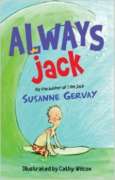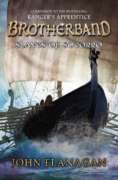
British schoolboy Ash Mistry, the reincarnation of the great Indian hero Ashoka and an agent of the goddess of death, faces the evil Lord Savage again after the villain sends his minions to capture Gemma, Ash’s unrequited crush.
Material appropriate for intermediate age groups

British schoolboy Ash Mistry, the reincarnation of the great Indian hero Ashoka and an agent of the goddess of death, faces the evil Lord Savage again after the villain sends his minions to capture Gemma, Ash’s unrequited crush.

“Kalinka, a Ukrainian Jewish girl on the run from the Nazis, finds unlikely help from two rare Przewalski horses”–

Young readers can follow along as two children perform an experiment in which they create a new planet, replicating in ten steps the exact processes that formed Earth.

“Jack’s life is pretty good — he has great friends, everyone loves his funny jokes and he’s an awesome inventor. But things are getting complicated. Nanna’s older and wobblier, and why does his face turn red when he sees his best friend, Anna? And to top it off, Mum and Rob’s wedding seems to be taking over the world. Something really scary has also happened to his mum and it’s going to take all of Jack’s courage to deal with it.”

With Hal and his fellow Herons returning home to Skandia victorious, they turn their attention to Tursgud, pirate leader of the Shark Brotherband, who has captured twelve Araluen villagers to sell as slaves.

Perry’s mother and father are busy people … they’re impatient, they’re tired, they get cross easily. And they think that only children, like Perry, should be kept busy. On Saturday mornings Perry and her father visit her gran, Honora Lee, at the Santa Lucia rest home, but Gran never remembers them. ‘Who is that man?’ Honora Lee asks when Perry’s father leaves the room. After movement class is abruptly cancelled, Perry is allowed to go to Santa Lucia on Thursday afternoons. She discovers her Gran has an unconventional interest in the alphabet, so Perry decides to make an alphabet book with the help of Honora and the others.

A biography of Agnes Gonxha Bojaxhiu, known as Mother Teresa, who spent most of her life serving “the poorest of the poor” in Calcutta, India.

In the rain forests of Malaysia, Nazam waits anxiously to climb the bee tree, proving that he is capable of succeeding his grandfather as leader of the traditional honey-hunting clan.
 When eleven-year old Shabanu, the daughter of a nomad in the Cholistan Desert of present-day Pakistan, is pledged in marriage to an older man whose money will bring prestige to the family, she must either accept the decision, as is the custom, or risk the consequences of defying her father’s wishes.
When eleven-year old Shabanu, the daughter of a nomad in the Cholistan Desert of present-day Pakistan, is pledged in marriage to an older man whose money will bring prestige to the family, she must either accept the decision, as is the custom, or risk the consequences of defying her father’s wishes.
This trilogy includes Shabanu, Haveli, and The House of Djinn.

This book unearths the mysteries of the Mawangdui tombs. Lady Dai’s mummy was so remarkably preserved that scientists were able to perform an autopsy—more than two thousand years after Lady Dai’s death. The tomb also protected hundreds of artifacts from the Han Dynasty. Miniature servants, mysterious silk paintings, and scrolls holding long-lost secrets gave invaluable clues to daily life in ancient China.